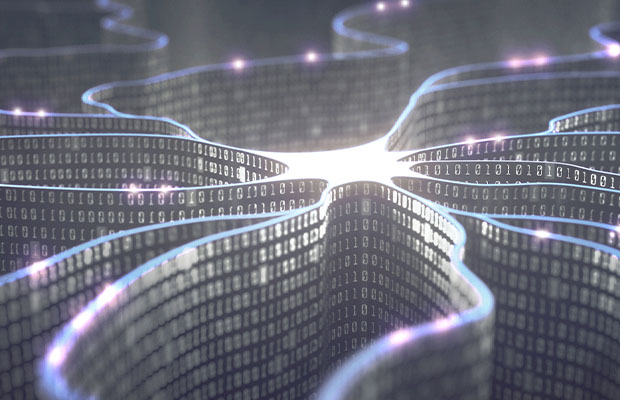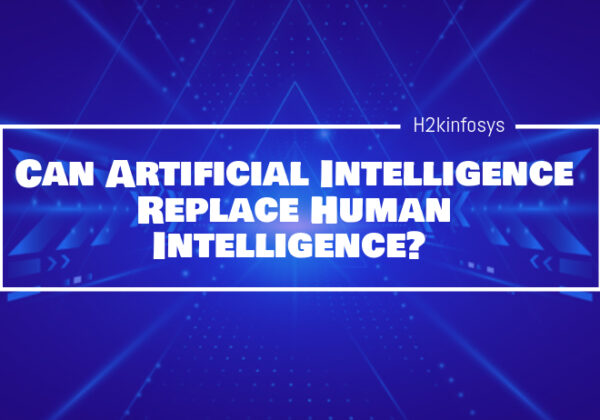Technology enthusiasts are talking a lot about AI, or artificial intelligence, lately, especially with all the hype surrounding it.
How to develop an AI system steps? In short, to make an AI, you must first determine the issue you’re trying to resolve, then gather the appropriate data, develop algorithms, train the AI model, select the appropriate computing environment, decide on a programming language, deploy your AI system, and then monitor its performance.
The creation of an AI system is distinct from conventional computer programming, in which the software does not continuously get better. This article offers a fundamental understanding of artificial intelligence, its uses, and the procedures required to create an AI.
What Is Artificial Intelligence?
Artificial intelligence (AI) refers to a machine’s capacity to perform tasks that intelligent beings do, such as controlling a robot with a computer. One subset of computer science is artificial intelligence. AI is used in things like self-driving cars, chatbots, and email spam filters, as well as Siri, Alexa, and other smart assistants.
Mathematician Alan Turing’s paper, “Computing Machinery and Intelligence,” and the fundamental aim and vision of artificial intelligence are expressed in the Turing Test. In his essay on artificial intelligence, Turing argued that there isn’t any evidence to support the claim that machines can’t think intelligently like humans. Similarly, the Turing Test is a method of determining whether a machine can “think.”
The capacity to receive or transmit information and retain it as knowledge is referred to as intelligence, according to the information theory. The information theory mathematically represents the conditions and parameters that affect how information is transmitted and processed
Co-founder of DeepMind Technologies Shane Legg claims that an agent’s capacity for goal-setting and problem-solving in a dynamic environment constitutes intelligence. You deal with natural intelligence when an agent is a person, and artificial intelligence when an agent is a machine.
AI Operation & Its Application
The cost and complexity of creating AI systems are declining. The fundamental idea behind creating a good AI is gathering pertinent data for the AI model to be trained on. In order for the AI to identify particular patterns in huge datasets, it needs to use programs or algorithms called AI models.
The more intelligently AI technology is developed, the more data it can intelligently analyze to learn how to do a specific task.
Machine learning (ML) is the process of using data analysis to carry out tasks. For instance, natural language processing (NLP) enables machines to read, comprehend, and imitate human behavior. ML and deep learning are used in the most promising AI applications. The latter runs on neural networks fashioned in a manner akin to that of the human brain.
AI systems have many practical applications. Below, you can find the most common examples of AI in daily life:
- Speech Recognition
A capability that uses NLP to convert spoken language into written form is automatic speech recognition (ASR), also known as computer speech recognition or speech-to-text. The voice search feature on Siri, for instance, uses speech recognition.
- Customer Service
More businesses are using virtual agents on the internet to provide customer service, taking the place of human agents. By 2025, artificial intelligence will be used in 95% of all customer interactions, according to Servion Global Solutions.
Read More: Artificial Intelligence in the Workplace
- Computer Vision
In this situation, artificial intelligence (AI) technology enables computers and systems to extract useful information from digital photos, videos, and other visual inputs. Instagram photo tagging is one example of how it is used.
- Discovery of Data Trends
Consumer behavior can be used by AI algorithms to identify data trends, enabling businesses to create successful cross-selling strategies. As a result, businesses are able to recommend pertinent add-ons during the checkout process. Predictive analytics software can help with that.
Making decisions in real-time using your data is possible with this software. For instance, the software can produce models for risk assessment that include fraud and risk detection, targeted marketing, and product recommendations.

- Fraud Prevention
Fraud involving payments and sensitive information is one of the main issues that artificial intelligence addresses. To effectively identify and stop this kind of fraud, businesses use AI-based systems.
- Automated Stock Trading
Each day, high-frequency trading platforms powered by AI execute thousands or even millions of trades. In America, automated trading will account for 50 percent of all stock market transactions by 2020. Allied Market Research predicts that by 2028, the global algorithmic market will be worth $31.2 million.
Read More: Artificial Intelligence In Accounting And Finance
How To Build An AI System?
1. Identify The Problem
First and foremost, the most important questions to ask are (1) “what are you attempting to solve for?” (2) “What is the desired outcome?”
However, we must continually remind ourselves that AI cannot be the panacea in itself. It’s a tool, not the entire solution itself. AI can be used to solve a wide range of issues using numerous techniques.
Consider this analogy that explains the aforementioned in more detail. Knowing exactly what you’re going to cook and all the ingredients you’ll need is essential if you want to prepare a tasty meal.
2. Preparation Of Data
One might believe that the numerous lines of code that correspond to the employed algorithm form the basis of any reliable AI system. But it’s not, really. Any AI toolkit must have data as a core component. It is usual for the data scientist to spend over 80% of the time cleaning, checking, organizing, and making the data fit to be used before writing even a single line of code.
As a result, the data must be checked for consistency before any model is run. Labels must also be added, and a chronological order must be established, among other things. It is common knowledge that the data will be more likely to solve the current problem if one sends it more messages.
Data comes in two main categories: structured data and unstructured data.
- Data that has been fixed in a format to maintain consistency is referred to as structured data.
- Unstructured data: Any type of data, such as images, audio files, etc., that lacks a set format. is classified as unstructured data.
3. Choosing An Algorithm
The hardest or best part of developing an AI system is now. There are still some fundamental concepts that must be understood in order to build an AI system, without getting too technical. The algorithm’s shape can change based on the type of learning it undergoes. There are majorly two ways of learning, as listed below:
- Supervised Learning: As the name suggests, supervised learning entails giving the machine a dataset on which to train itself in order to produce the necessary results on the test dataset. Now, there are several supervised learning algorithms available, namely SVM (Support Vector Machine), For example, naïve Bayes Classification, Logistic Regression, and Random Forest generation. Knowing if our ultimate objective was to gain insight on a specific loan, particularly if the knowledge we seek is the likelihood for the loan to default, would be a great way to understand the supervised learning of classification.
On the other hand, if our objective was to obtain a value, we would use the regression type of supervised learning. In this instance, the value might be the sum that would have been lost if the loan had defaulted.
- Unsupervised Learning: Because of the different types of algorithms used, this type of learning is different from supervised learning. These can be divided into three groups: clustering, where the algorithm tries to group things; association, where it enjoys discovering connections between the objects; and dimensionality reduction, where it reduces the number of variables to lessen noise.
4. Training The Algorithms
The chosen algorithm must be trained as a necessary step to guarantee the model’s accuracy. Therefore, the next logical step in creating the AI system is algorithm training after choosing an algorithm. The chosen framework must be kept at a certain level of accuracy even though there are no universal metrics or standards for model accuracy.
The key to creating a functional AI system is training and retraining because it makes sense that the algorithm might need to be retrained if the desired accuracy is not achieved.
5. Choosing The Best Language For Ai
We decide to write the code and create our AI systems after considering a number of different language options. There are many different languages, including traditional C++, java, and more contemporary languages like python and R. For writing the code to create AI systems, Python and R are by far the most widely used languages.
The choice’s justification is straightforward. One can create models using the robust machine-learning libraries available in both R and Python. With a strong set of libraries, developing the AI model itself would take less time than writing the algorithms. A helpful library that lets users access pre-written code rather than requiring them to write everything from scratch is the NTLK, or natural language toolkit, library in Python.
6. Selected Platforms
Instead of purchasing your own service, database, etc., choose a platform that offers all of the services.
One of the most helpful pieces of infrastructure for the development of machine learning has been the ready-made platform known as “Machine Learning as a Service.” These platforms, which often provide cloud-based advanced analytics that can be used with and incorporate multiple algorithms and multiple languages, are designed to simplify and facilitate Machine Learning.
Rapid deployment is essential to MLaS’s success. Platforms typically assist with problems like pre-processing data, training models, and making predictions about evaluations, but they do vary and some pre-evaluation is essential.




